Motif Library¶
Circassian embroidery looked like flowers and branches to me. Then one day when I was in eighth grade, we went on a camp to Nalchik to learn more about our origins and communicate with Circassians there. During a museum visit, the guide pointed to a dress sleeve saying the ornaments resembled a woman carrying life in her womb. A few years later, I started learning about Jordanian and Palestinian embroidery motifs.
I started wondering if those Circassian swirls carry more meanings.
History¶
The Circassian art of sewing with gold has been forming and transforming through women's hands across the ages. But the path back to origins is the most difficult. The first written information on Circassian embroidery skills appeared in the Arab traveller Massudi's writings in the 10th century AD. It was not mentioned again until the 15th century by the Italian traveller Interiano 1. Almost no documentation exist of the motifs and their meanings although several books keep images of ornamented textiles and document embroidery and weaving techniques used by Circassian women.
I found only one research 2 discussing the possible meanings of the motifs, a paper by Nuriet Teuchezh as a part of her Ph.D thesis titled "The gold embroidery art of the Adyghes: The historical and ethnographic study”. According to Teuchezh, the patterns were geometric and linear at first, then other forms started to appear. Depiction of domestic and wild animals became more abstract and schematic with time. I identified six main motifs from Teuchezh’s 13 forms, and added my own interpretations according to my readings and meetings with the local community.
Motifs¶
Click on a motif to explore more.
Trefoil¶


The first two variations are taken from Teuchezh's paper, while the third is added by me. A trefoil is a plant with three-lobed leaves. It could represent a combination of three worlds: water, earth, and sky. The Adigheys (Circassians) divided the world into four elements: sky, earth, water, and underground. The number three also has a sacred meaning for Circassians. When a knight leaves his home or approaches a village carrying three arrows it means he comes in peace 3. The Circassian flag today has three crossed arrows.

Other vegetal elements make up Circassian ornaments as well. I chose to add the vegetal elements in this section under the trefoil as the trefoil is the most common of vegetal elements in Circassian embroidery and ornamentation. Below are some pictures dated back to the 19th and 20th centuries that show embroidery of vegetal elements.
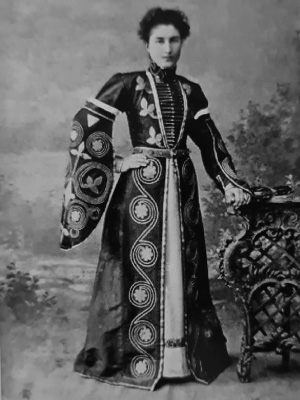
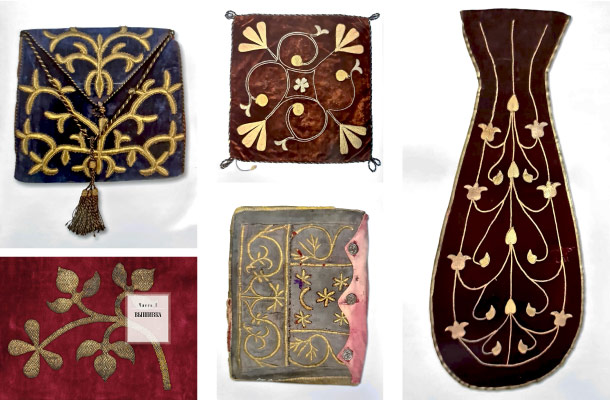
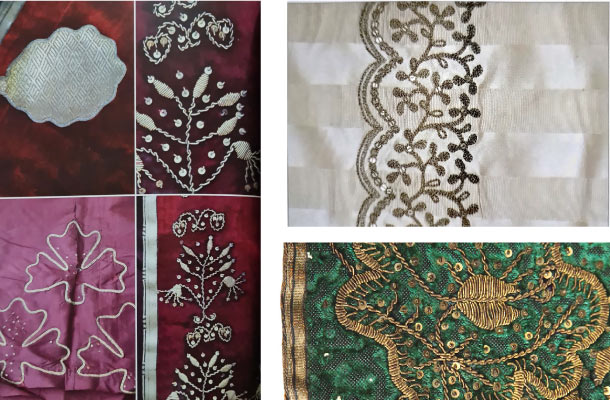
Rhomboid¶

A rhomboid imitates a map or the four cardinal points: top, bottom, sunrise, sunset 2. Therefore, I believe it could be used as a symbol of the earth or land. It could also represent the four elements of the world: sky, earth, water, and the underground.
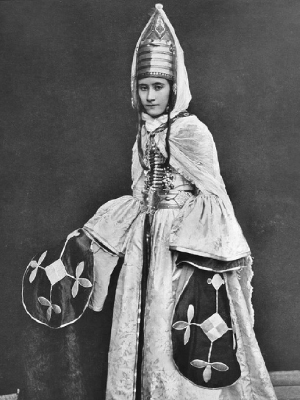

Circle¶

A golden circle represents the sun, while a silver one represents the moon.

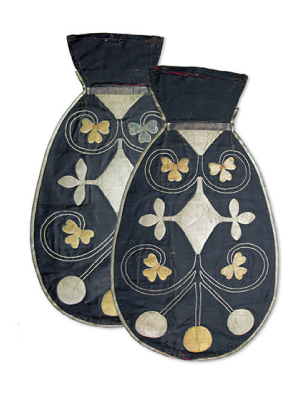
Cross¶
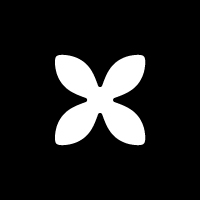

The cross is a symbol of sacred fire. It was also interpreted as a fireplace or as a bird flying 2. In Circassian mythology, there are stories about Narts (from the Nart sagas, Nart meaning knight) who stole the secret of the fire from the gods, or stole the fire back from the ghouls. Fire is something sacred and it did not originate on Earth but came from Gods. Circassians lived in cold lands and fire was needed to keep warm and cook. It was a good sign to see smoke coming out continuously from the chimney of a house during winter as it meant those people were generous, always having guests, cooking for them and keeping them warm.
The fire motif could symbolize life, the birth of life, the desire to live, something sacred, or values.
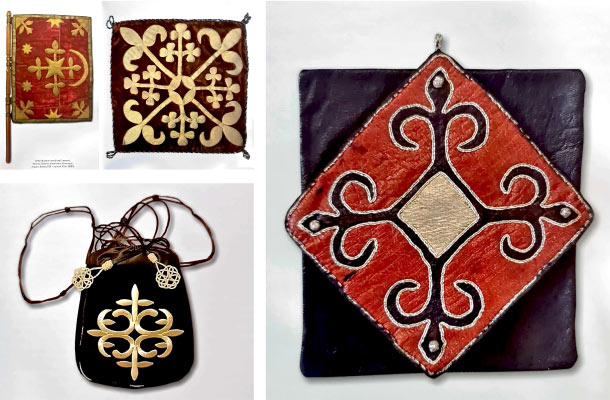
Zoomorphic¶
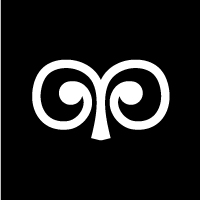

Some ornamentations are representations of domestic animals (dogs, bull, horse, sheep, goat) or wild animals (wolf, deer, snake, fish, birds) 2. With the passing of time, these representations became more schematic and symbolic. The following pictures show a deer and two fish. On the shoes and the piece to the right is seen a more abstract ram.
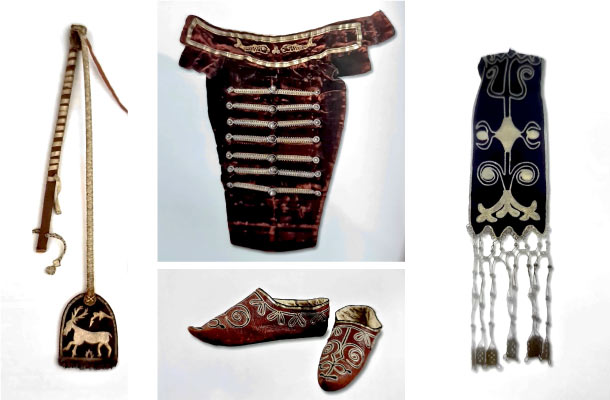
Anthropomorphic¶
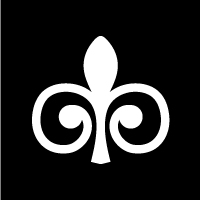

The middle motif is the symbol I had seen printed as high as the ceiling at a Circassian clothes museum in Nalchik. It is the spark that lead to this journey. The guide told us it represents a woman carrying life in her womb. He said they used to put it on women's sleeves to show they were fertile but I did not find any sleeves decorated with it. In fact, I only found it on a pouch that looks relatively new. But once you see it you can't unsee it, as they say. Now when I look at ornaments I unconsiously start finding anthropomorphic motifs. The following image shows a project done in 2018 with the title Circassian Divas. I find this inspirational.
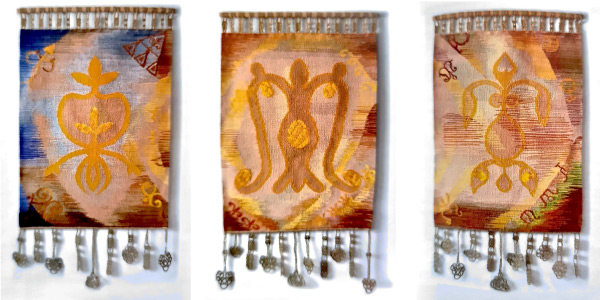
Composition¶
The ornamental composition is usually symmetric either formed on a vertical axis or two cruciformly intersecting axes.

Community Designs¶
On March 5, 2023, I arranged a workshop in Al Jeel Club, with the help of the cultural committee, to discuss motif meanings with the community and design ornaments that tell the story of our future. They came up with amazing designs and stories. Following are some designs I digitalized.
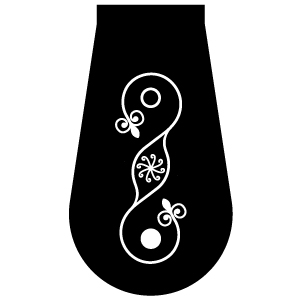 |
Nireen Yazaw shows people living through days and nights, expressed by a sun and moon following each other, while the fire of life burns in their souls. |
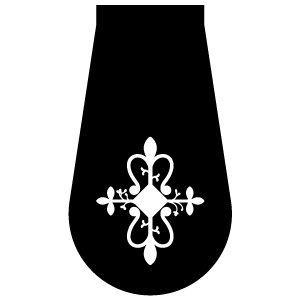 |
Yara Bers made this design accompanied by a sentence: the womb of the future, although scattered, still carries blessings and blooms. |
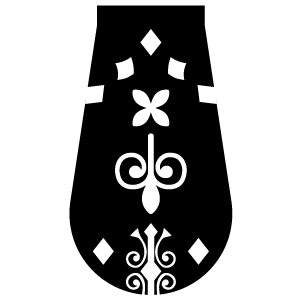 |
Shamel Beno took a little break from capturing the workshop to tell the story of losing the Circassian lands and people pushing through guided by our shared values. |
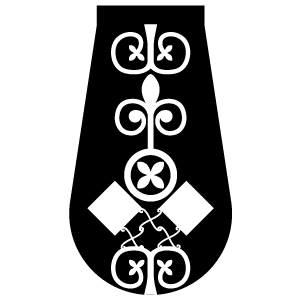 |
Yasmine Abaza portrays the wilderness in people with a motif that symbolizes wild plants and animals at the top. She put a fire and a sun between two lands to express sunrise and sunset. Then added an army of knights at the bottom. |
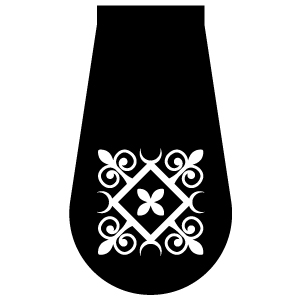 |
Sinareet Stash and her sister Sinamees drew this design while discussing with my dad and uncle Hussein. They show values that connect Circassians scattering across the lands. They added a cresent referring to Islam. |
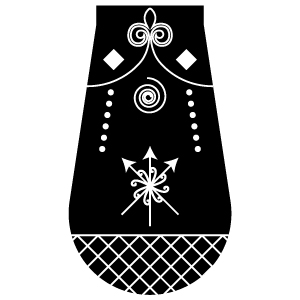 |
Essa Libzo started his design with a strong person at the top. There is a sun in the middle and 12 stars on the sides (12 stars from the Circassian flag that refer to the 12 Circassian tribes). He added a fire with three arrows that symbolize peace in Circassian culture. At the bottom he shows the lost lands. |
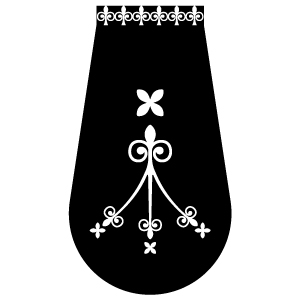 |
Aunt Tamara Toghoj wanted expressed how important our values are by putting them above a person's head. She shows how the next generations will also carry and respect the Circassian values. |
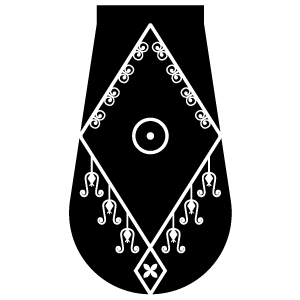 |
Dana Libzo enveloped her design with a big rhomboid referring to Islamic geometries. She put a sun in the middle as a symbol of hope and added anthropomorphic and vegetal elements. |
 |
Khadeeja Shaweesh had the most bizarre design, depicting alien ships with circles at the top to represent space. In the center there is an alien and a human connected, with varios aliens and humans standing around. She imagined a future where aliens find Earth and are introduced to our values. |
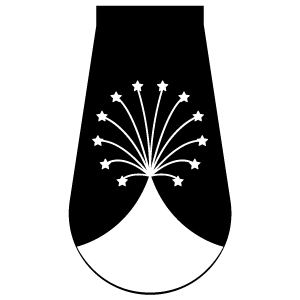 |
Laila Alma'ani drew 12 stars (12 Circassian tribes) emerging from and connecting to a mountain, or land. |
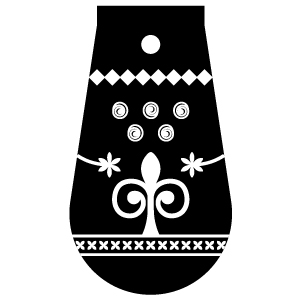 |
Noor Kosh has a person standing in the middle surrounded by nature with earth and flowers beneath her and sun and clouds above her head. |
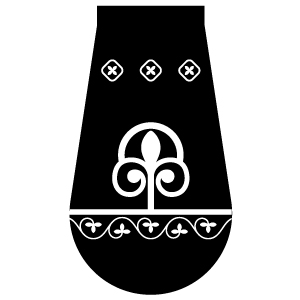 |
Saif Sukkariya shows a strong person standing on blooming lands. |